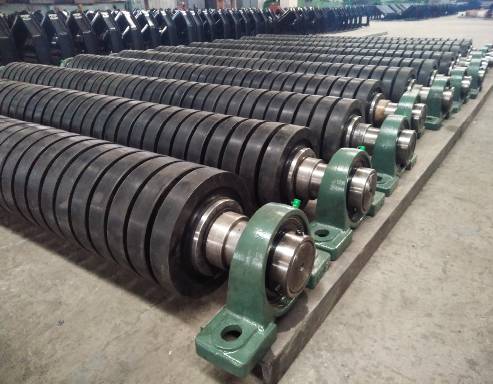 Afrikaans
Afrikaans  Albanian
Albanian  Amharic
Amharic  Arabic
Arabic  Armenian
Armenian  Azerbaijani
Azerbaijani  Basque
Basque  Belarusian
Belarusian  Bengali
Bengali  Bosnian
Bosnian  Bulgarian
Bulgarian  Catalan
Catalan  Cebuano
Cebuano  Corsican
Corsican  Croatian
Croatian  Czech
Czech  Danish
Danish  Dutch
Dutch  English
English  Esperanto
Esperanto  Estonian
Estonian  Finnish
Finnish  French
French  Frisian
Frisian  Galician
Galician  Georgian
Georgian  German
German  Greek
Greek  Gujarati
Gujarati  Haitian Creole
Haitian Creole  hausa
hausa  hawaiian
hawaiian  Hebrew
Hebrew  Hindi
Hindi  Miao
Miao  Hungarian
Hungarian  Icelandic
Icelandic  igbo
igbo  Indonesian
Indonesian  irish
irish  Italian
Italian  Japanese
Japanese  Javanese
Javanese  Kannada
Kannada  kazakh
kazakh  Khmer
Khmer  Rwandese
Rwandese  Korean
Korean  Kurdish
Kurdish  Kyrgyz
Kyrgyz  Lao
Lao  Latin
Latin  Latvian
Latvian  Lithuanian
Lithuanian  Luxembourgish
Luxembourgish  Macedonian
Macedonian  Malgashi
Malgashi  Malay
Malay  Malayalam
Malayalam  Maltese
Maltese  Maori
Maori  Marathi
Marathi  Mongolian
Mongolian  Myanmar
Myanmar  Nepali
Nepali  Norwegian
Norwegian  Norwegian
Norwegian  Occitan
Occitan  Pashto
Pashto  Persian
Persian  Polish
Polish  Portuguese
Portuguese  Punjabi
Punjabi  Romanian
Romanian  Russian
Russian  Samoan
Samoan  Scottish Gaelic
Scottish Gaelic  Serbian
Serbian  Sesotho
Sesotho  Shona
Shona  Sindhi
Sindhi  Sinhala
Sinhala  Slovak
Slovak  Slovenian
Slovenian  Somali
Somali  Spanish
Spanish  Sundanese
Sundanese  Swahili
Swahili  Swedish
Swedish  Tagalog
Tagalog  Tajik
Tajik  Tamil
Tamil  Tatar
Tatar  Telugu
Telugu  Thai
Thai  Turkish
Turkish  Turkmen
Turkmen  Ukrainian
Ukrainian  Urdu
Urdu  Uighur
Uighur  Uzbek
Uzbek  Vietnamese
Vietnamese  Welsh
Welsh  Bantu
Bantu  Yiddish
Yiddish  Yoruba
Yoruba  Zulu
Zulu Effective Materials for Conveyor Pulley Lagging and Their Benefits in Industrial Applications
Understanding Conveyor Pulley Lagging Materials Importance and Types
Conveyor systems play an integral role in various industries, facilitating the seamless transport of materials from one location to another. A critical component of these systems is the pulley, which helps to guide the conveyor belt and maintain its alignment. To enhance the efficiency and durability of conveyor pulleys, lagging materials are often applied to the pulley surface. This article delves into the significance of conveyor pulley lagging materials, their functions, and the different types available.
Importance of Pulley Lagging
Pulley lagging serves several vital functions in conveyor systems. Firstly, it provides increased friction between the pulley and the conveyor belt. This enhanced traction prevents slippage, ensuring that the belt moves smoothly and efficiently, even under heavy loads. By improving the grip, lagging helps maintain the intended speed and alignment of the belt, ultimately reducing wear and extending system life.
Secondly, pulley lagging acts as a protective layer for the pulley itself. The material protects the pulley from environmental factors such as moisture, dust, and debris, which can lead to corrosion and wear over time. By safeguarding the pulley, lagging materials extend its life, reduce maintenance needs, and decrease operational costs.
Lastly, lagging can help reduce noise generated during the operation of the conveyor system
. By dampening vibrations and minimizing friction, lagging makes the operation quieter and more pleasant for workers in the vicinity.Types of Conveyor Pulley Lagging Materials
There are several types of lagging materials available, each with its own advantages and applications. The most common types include
conveyor pulley lagging material

1. Rubber Lagging Rubber lagging is widely used due to its excellent grip and durability. It comes in various thicknesses and can be either plain or patterned. The textured surface helps enhance traction even in wet or slippery conditions. Rubber lagging is also resilient to wear and tear, making it an ideal choice for heavy-duty applications.
2. Ceramic Lagging Ceramic lagging is engineered with ceramic tiles embedded within the rubber layer. This unique combination provides superior wear resistance and significantly increases the grip on the conveyor belt. Ceramic lagging is especially useful in applications where aggressive materials are transported or in environments with extreme conditions.
3. Polyurethane Lagging Polyurethane is another material used for pulley lagging. It offers good abrasion resistance and can be formulated to achieve different hardness levels. The advantages of polyurethane lagging include its lightweight nature and versatility in various applications. It's often chosen for operation in environments where chemicals or abrasion are concerns.
4. Steel Lagging Steel lagging is primarily employed in extreme applications where durability and thermal resistance are critical. It is typically used in high-temperature operations or where abrasive materials are conveyed. While it provides excellent protection and durability, it can be heavier and requires more robust pulley designs.
5. Composite Lagging Composite lagging combines multiple materials to achieve specific performance characteristics. For example, a combination of rubber and steel may be utilized to enhance both grip and durability. The flexibility of composite lagging allows it to be tailored to the unique requirements of various conveyor systems.
Conclusion
In conclusion, the selection of appropriate conveyor pulley lagging materials is crucial for the efficient and long-lasting operation of conveyor systems. Different materials offer distinct benefits, and understanding these characteristics can help businesses make informed decisions tailored to their operational needs. By investing in quality lagging solutions, companies can enhance their conveyor system’s performance, reduce maintenance costs, and ensure safer working environments. As industries continue to evolve, so too will the materials and technologies used in pulley lagging, reflecting the ongoing pursuit of efficiency and reliability in material handling processes.
-
Revolutionizing Conveyor Reliability with Advanced Rubber Lagging PulleysNewsJul.22,2025
-
Powering Precision and Durability with Expert Manufacturers of Conveyor ComponentsNewsJul.22,2025
-
Optimizing Conveyor Systems with Advanced Conveyor AccessoriesNewsJul.22,2025
-
Maximize Conveyor Efficiency with Quality Conveyor Idler PulleysNewsJul.22,2025
-
Future-Proof Your Conveyor System with High-Performance Polyurethane RollerNewsJul.22,2025
-
Driving Efficiency Forward with Quality Idlers and RollersNewsJul.22,2025





























